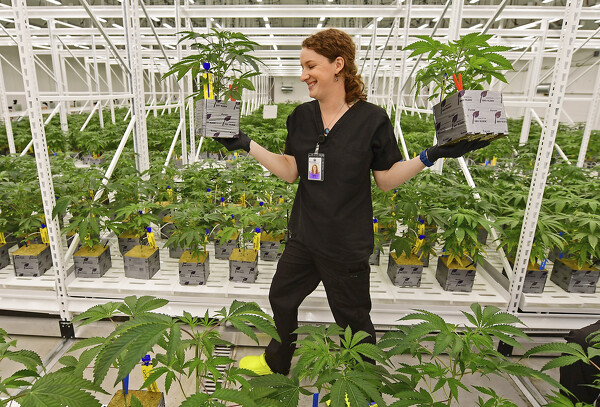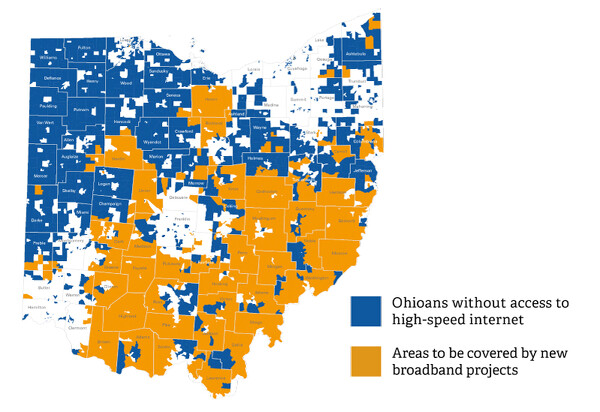Saturday, November 18th, 2023
Issue 2 passed. Now what?
Medical director discusses workforce, health effects
By Leslie Klosterman

Photo from Associated Press
In this 2019 file photo, marijuana buds are shown, in Akron.
WAPAKONETA - With the passage of Issue 2, Ohio will be the 24th state to allow adult cannabis use for non-medical purposes, which comes with a variety questions over what comes next, and what it means for employers and their employees.
Auglaize County Medical Director Dr. Juan Torres during the county board of health meeting earlier this week discussed the changing attitudes surrounding marijuana and the implications now that it's been approved for recreational use.
Marijuana is the second most used psychotropic drug in the U.S. after alcohol, Torres said, and the public is increasingly viewing cannabis as a harmless drug. About 54% of the U.S. population now live in a state where marijuana is legalized, he noted.
Torres said the U.S. did not regulate cannabis until the Marijuana Tax Act of 1937. Like many countries, the U.S. profited from the commercial applications of hemp fiber, seeds and oil prior to the law.
While in principle the act was created to stop the use of the plant as a recreational drug, in practice it made hemp importation and commercial production less economical, according to information from U.S. Customs and Border Protection. Scientific research and medical testing of marijuana also virtually disappeared. By 1970, marijuana was classified and restricted on par with narcotics and new, more restrictive laws were passed.
Federal law still considers cannabis a schedule 1 drug, which are defined as drugs with no currently accepted medical use and a high potential for abuse. Due to this, cannabis research is difficult and there are many claims made about the drug without scientific basis, Torres said.

Photo from Associated Press
Carmen Fultz, an employee of Buckeye Relief LLC, carries marijuana plants inside a Veg Room in Eastlake in this 2018 file photo.
Only one facility was authorized to grow marijuana for federal research purposes until 2021 when the Drug Enforcement Agency (DEA) announced it would register additional manufacturers to cultivate marijuana for research purposes.
Despite the limited research, there's evidence that cannabis has therapeutic effects for some medical conditions, Torres said, such as an anti-nausea and vomiting remedy for adults undergoing chemotherapy.
At the same time, there's also evidence that cannabis use can have negative effects on health, such as worse respiratory symptoms and more frequent bronchitis episodes associated with long-term cannabis smoking.
Issue 2's passage also creates new terrain for employers and employees to navigate.
"It will create some issues in terms of jobs, safety-sensitive positions, what intoxication is going to be," he said. "Because it is legal, like alcohol. But you cannot go to work drunk. So it's legal but you cannot go to (work) intoxicated. That will create issues (for) employers and others, especially in the health care industry."
The change could lead to increased testing in professions such as health care and law enforcement.
For example, the city of St. Marys recently accepted a tentative agreement from the Ohio Patrolmen's Benevolent Association for the city's police sergeants which stipulates that refusing a drug or alcohol test would result in termination rather than discipline, and there are no exemptions for medical marijuana use.
It's worth nothing that Issue 2 does not provide protections for Ohio employees who use marijuana. Employers are not required to accommodate an employee's use, and employers are also free to discipline, fire or take other adverse action against an employee for marijuana use or possession.
Torres said this could prove to be problematic for both employees and employers. Employees who use recreational marijuana outside of work, similar to alcohol, could face repercussions if they test positive, even if they are not under the influence on the job.
Likewise, employers who test staff for marijuana will have to decide if they are looking for a positive test result or active intoxication.
Torres highlighted that marijuana is lipid-soluble, meaning it is deposited in the tissues of fatty organs such as the liver, kidneys, brain and lungs. As a result, marijuana can be detected in the body three weeks after ingestion or more depending on how frequently someone uses the drug, he said.
"(Companies) need to change between if it's positive or if you were intoxicated," he said. "With alcohol … you blow in a breathalyzer and you can tell. Marijuana is going to be very difficult because it stays in the body for 30 days or more … (if the person is a) chronic user or (if it's) medically prescribed."
The law takes effect Dec. 7, and it will take nine months for regulations to be created and placed into Ohio Revised Code.





